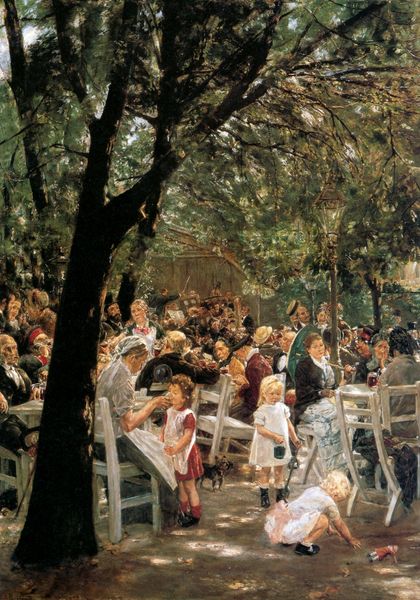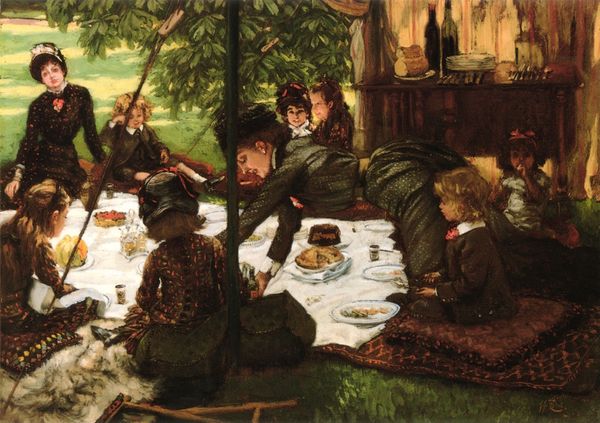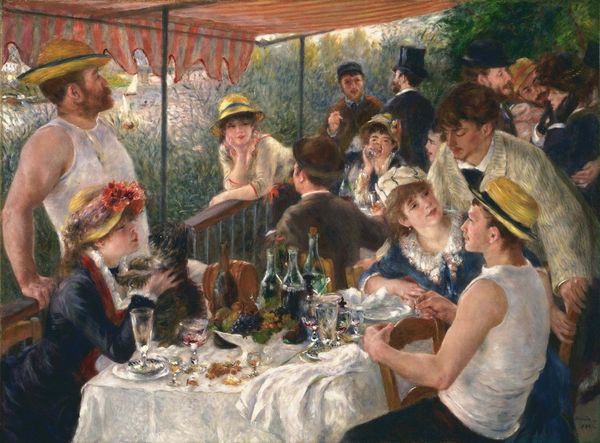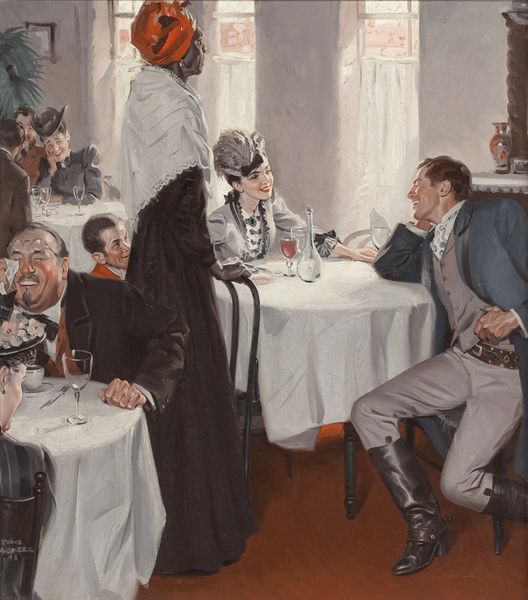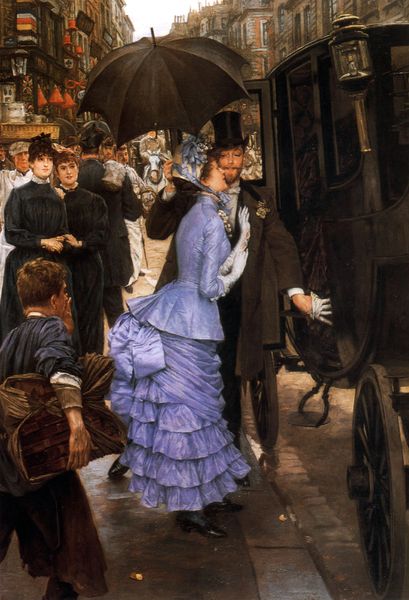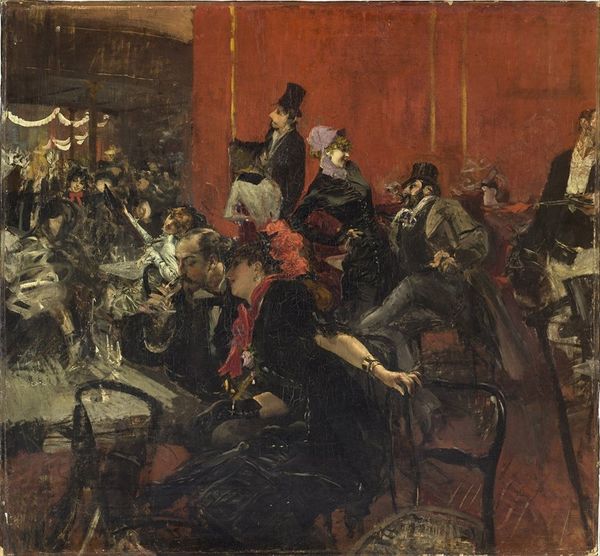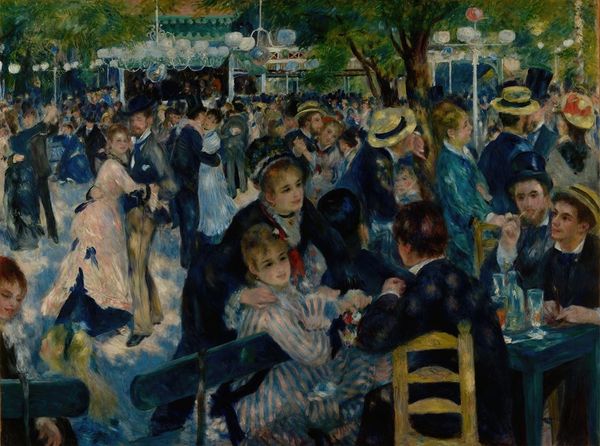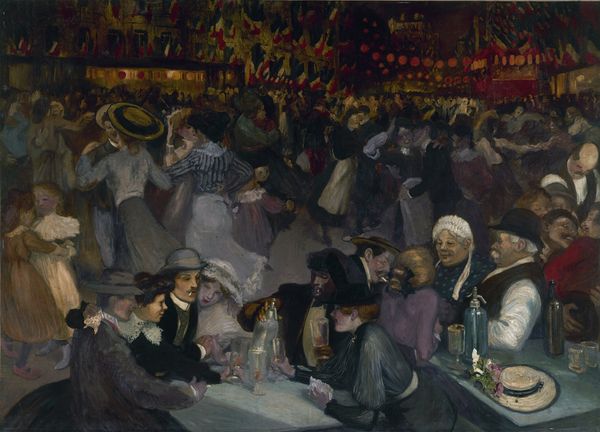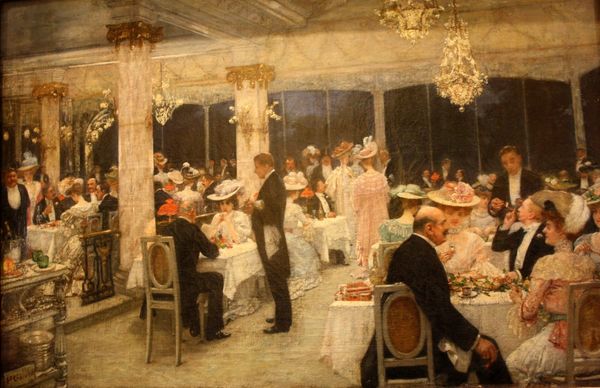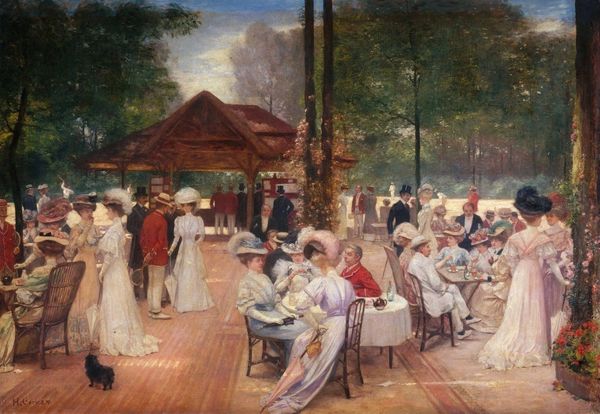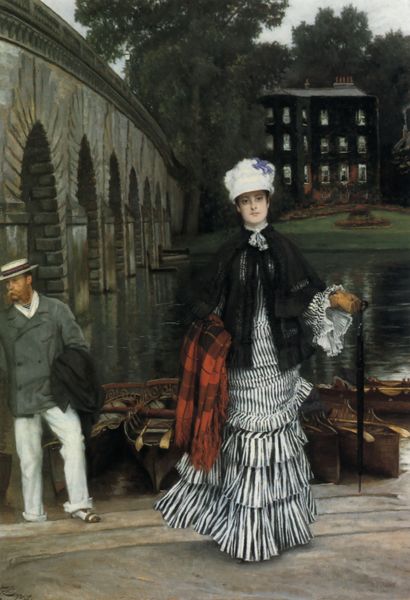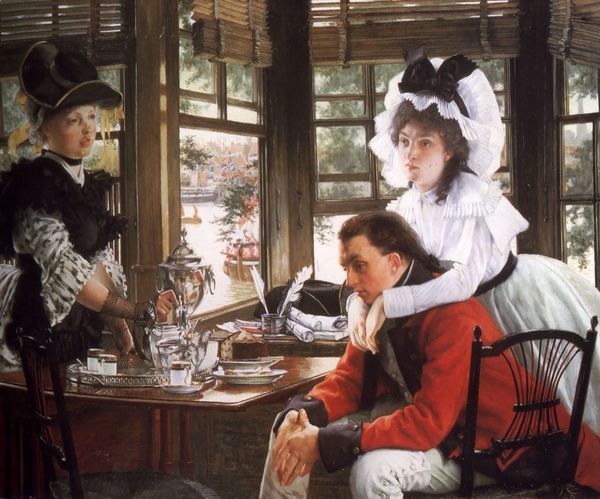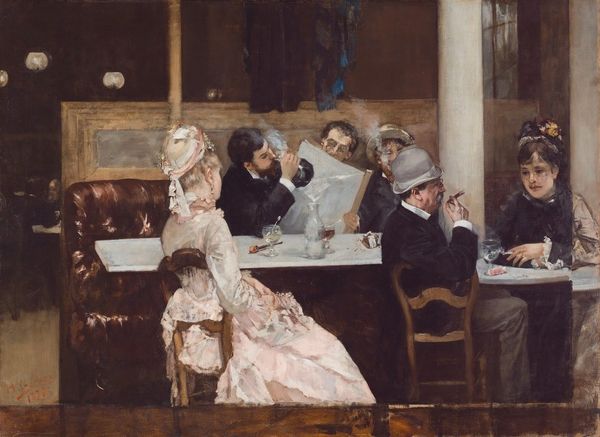
painting, oil-paint
#
portrait
#
narrative-art
#
painting
#
impressionism
#
oil-paint
#
group-portraits
#
cityscape
#
genre-painting
#
academic-art
#
modernism
Copyright: Public domain
Curator: Looking at James Tissot’s 1885 oil painting, “The Artist’s Ladies,” one is immediately struck by its dense composition and the way the artist has captured the buzz of Parisian society. Editor: My initial impression is of a cacophony, a visual and social excess. The rigid geometry of the tables, juxtaposed with the organic curves of the figures creates an interesting tension. Curator: The setting is undoubtedly significant. This is not just a scene of leisure; it reflects the growing commercialization of Parisian social life during the late 19th century. The women depicted, likely models or actresses, are positioned within this network of wealth and spectacle. The gaze directed at the viewer speaks to performance of femininity as it intersects with class and labor. Editor: Precisely. And formally, it's a marvel of textures. Consider how Tissot uses variations in brushwork to differentiate between the materiality of the fabrics, the architecture, and even the foliage. It’s not simply mimetic; it is about creating a sense of visual abundance, perhaps even excess. I’m also struck by the light, particularly the dappled light filtering through the restaurant’s awning. It suggests a fleeting moment, an ‘impression’ if you will. Curator: Absolutely. It echoes the artistic tensions of the time as well; Tissot, while often associated with the Impressionists due to his subject matter, maintained a connection to Academic painting, a duality apparent in his meticulous detail coupled with capturing fleeting moments of modern life. The artist seems to grapple with what the performance of femininity and identity means in the broader spectacle. Editor: Indeed, and I appreciate that tension. It would be simplistic to view this merely as a depiction of bourgeois leisure, the picture is a dense tapestry of techniques and the interplay of texture, form, light, and representation. It alludes to complex societal hierarchies through clever construction. Curator: Seeing the work now, its capacity to act as both historical document and a critical examination of 19th century social conventions feels powerfully resonant, particularly when viewed through a feminist lens. Editor: Agreed, and that formal sophistication provides a pathway to interpreting this complicated commentary on Parisian life, allowing one to draw multiple levels of meaning from a scene that at first appears uncomplicated.
Comments
No comments
Be the first to comment and join the conversation on the ultimate creative platform.
